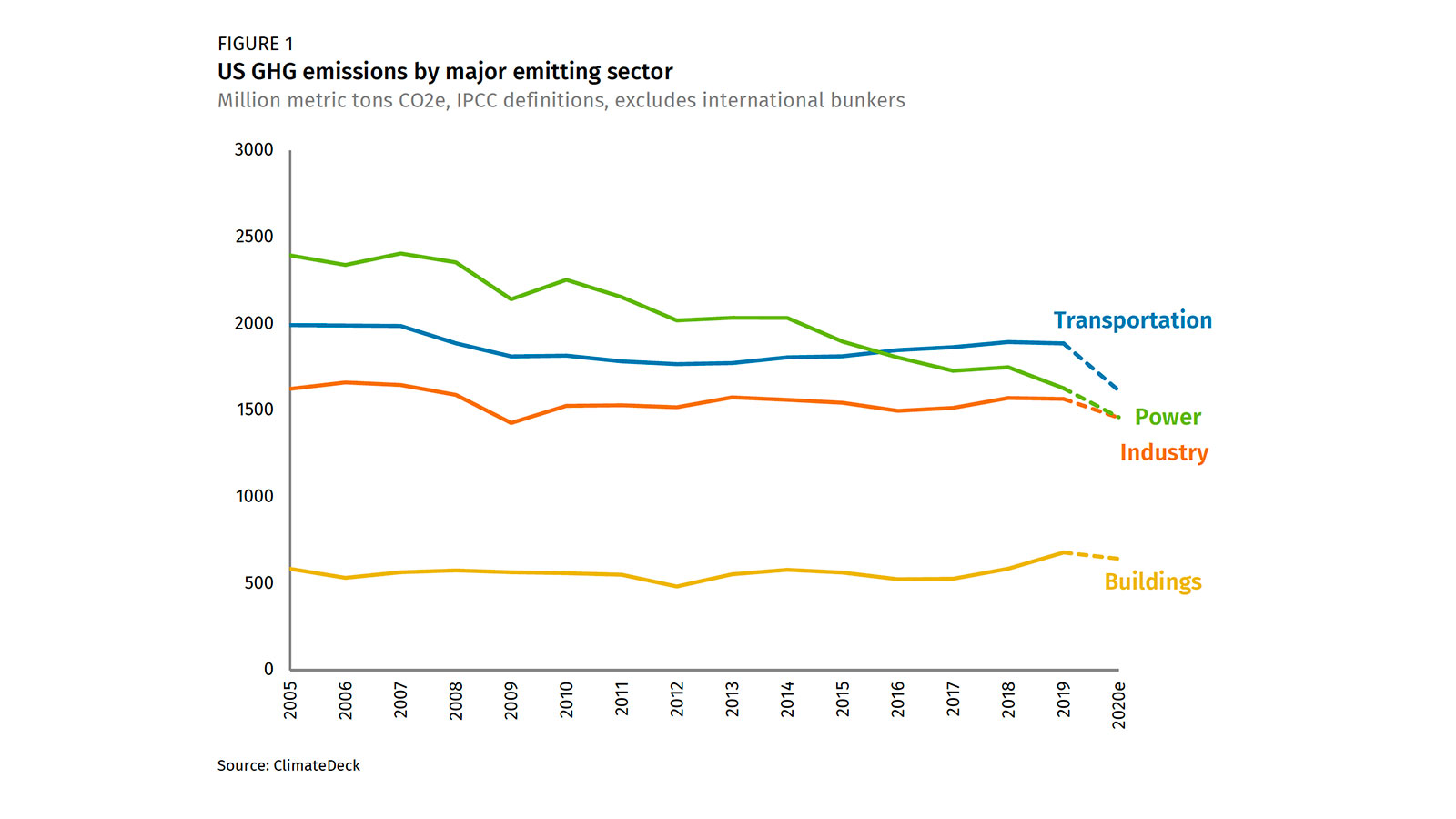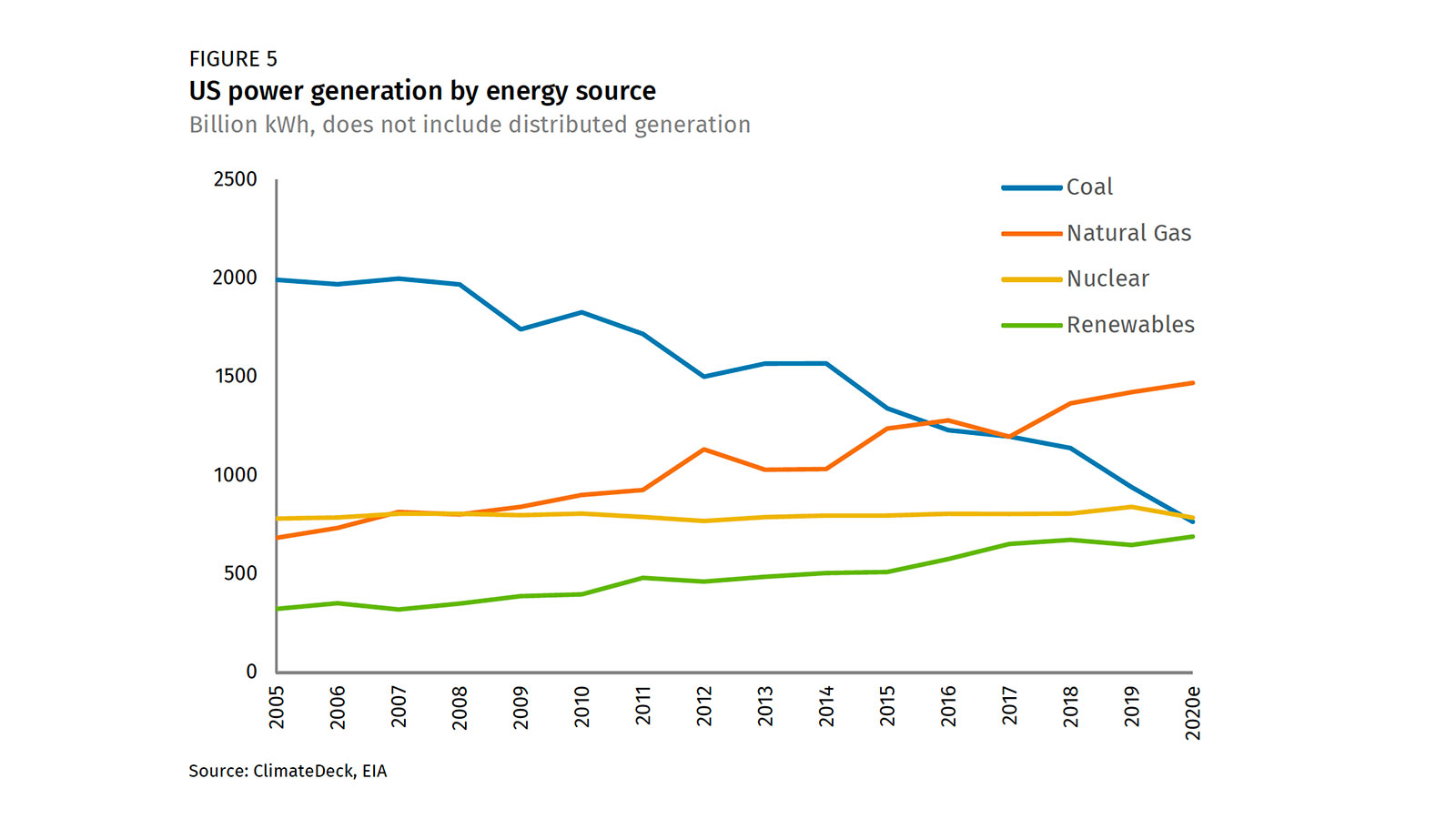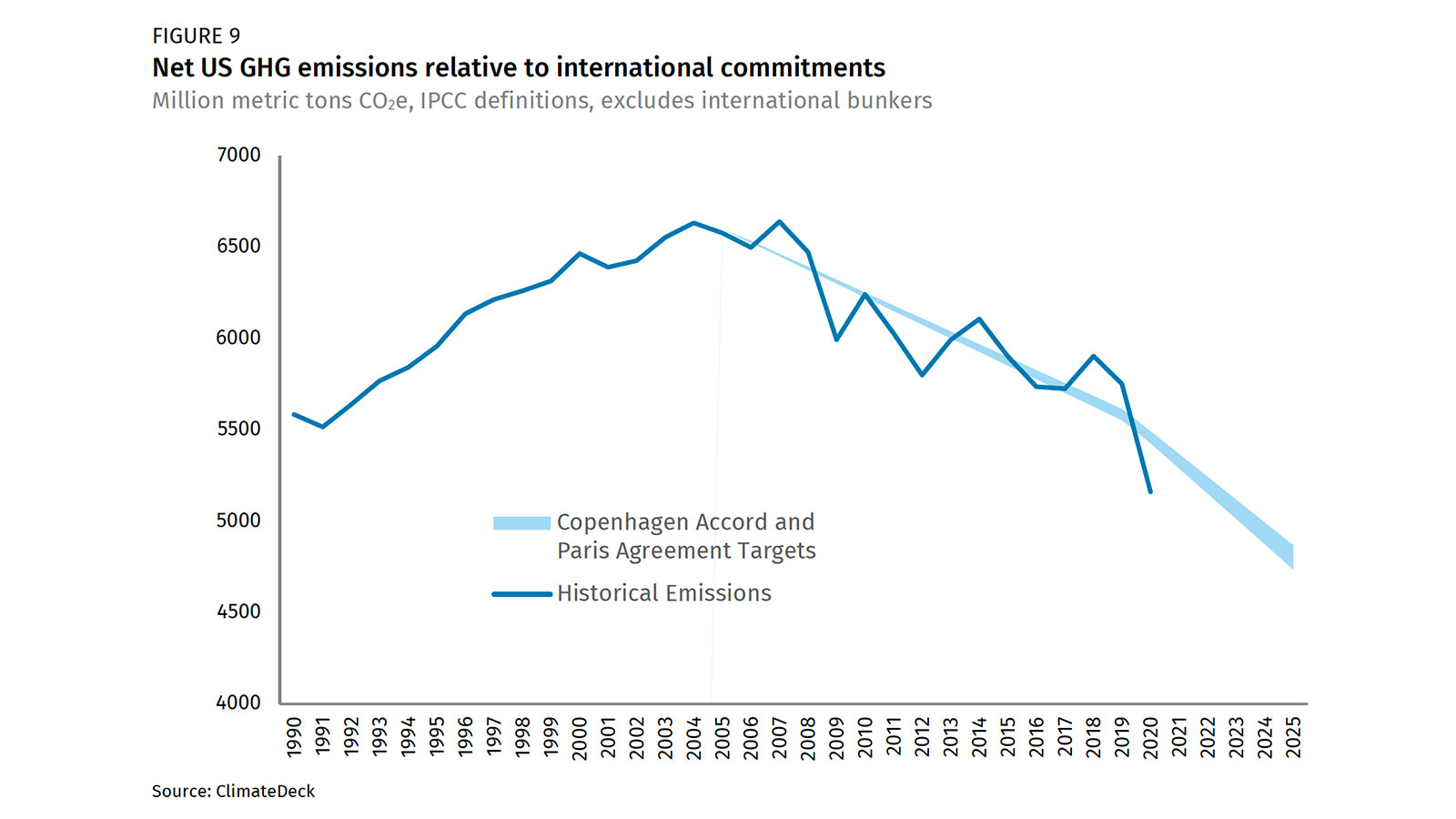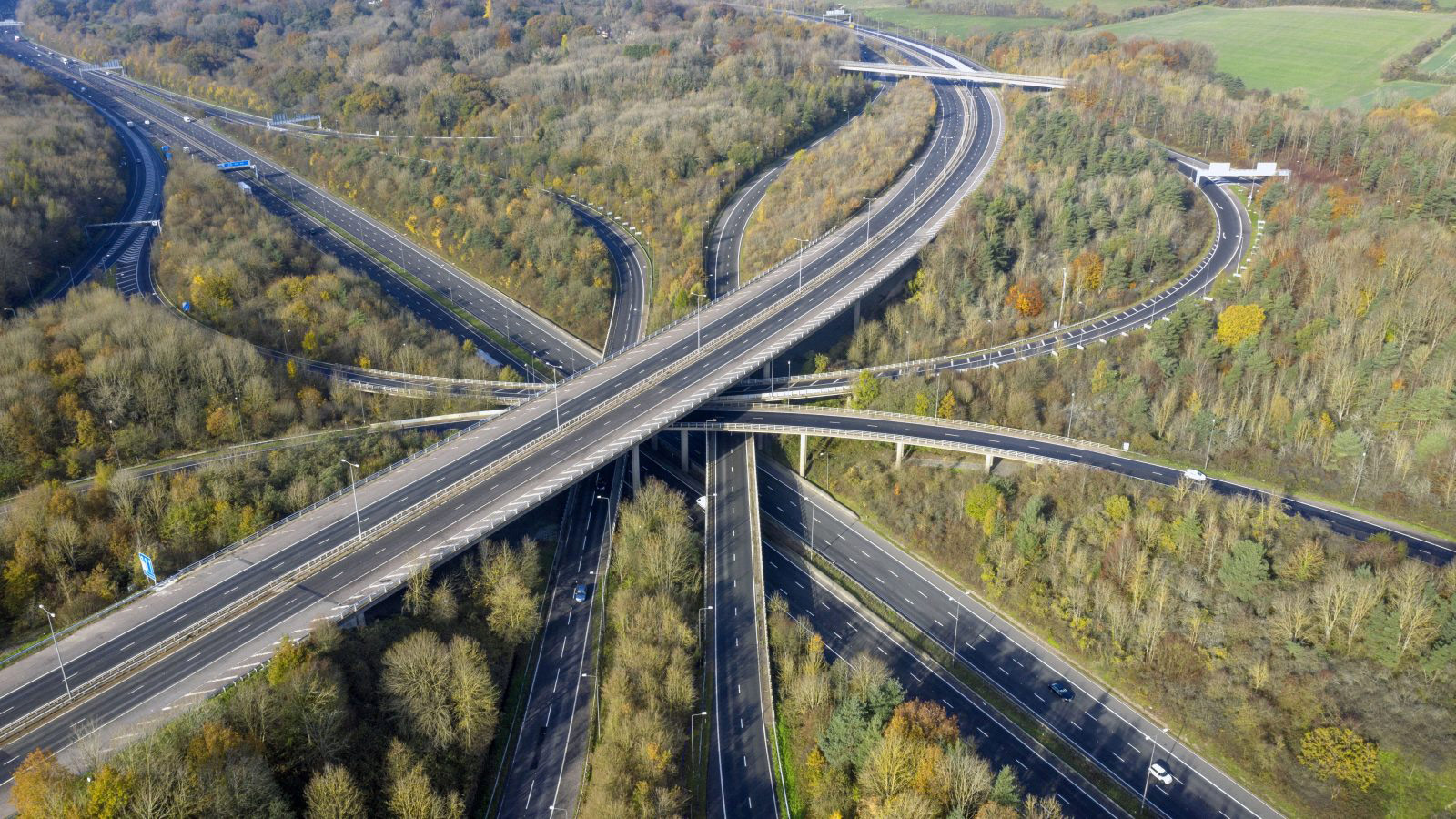The first full estimates of the United States’ emissions last year are in, showing the greatest annual drop in greenhouse gases since World War II. The country’s emissions fell 10 percent, more than the 7 percent drop worldwide, according to the calculations of the Rhodium Group.
Thanks to this dramatic drop, U.S. emissions are down 21 percent from 2005 levels. That’s better than the country’s reduction target set by the 2009 Copenhagen Accord, but still behind on its pledge under the Paris Agreement to cut emissions by 26 to 28 percent by 2025. Some might be tempted to think of this plague year, when the spread of COVID-19 slowed global movement to a crawl, as giving the country a head start in meeting its targets. But reducing emissions through death and poverty is no way to solve the climate crisis — it’s both cruel and politically unviable.
“The enormous toll of economic damage and human suffering as a result of the pandemic is no cause for celebration,” wrote the authors of the new report from the Rhodium Group, an independent research provider that issues regular emissions estimates. “The vast majority of 2020’s emission reductions were due to decreased economic activity and not from any structural changes that would deliver lasting reductions in the carbon intensity of our economy.”
The drop is also expected to be temporary, with emissions rebounding once the pandemic recedes. Sure, economic hardship reduces pollution in the short term, but the country is going to have to adopt policies that reduce greenhouse gas emissions during booms, not just busts.
Last year’s economic crash drove down emissions in every sector, but none more than transportation, where they fell almost 15 percent.

Many people simply stopped moving as the quarantine orders rolled out. At the peak of the lockdowns in April and May, Americans were buying 40 percent less gasoline compared to 2019 levels, and demand for jet fuel was down a whopping 68 percent. As pandemic fatigue set in, cars returned to the roads and planes to the sky. But even in October, Americans were still driving about 9 percent less than normal — perhaps because they were still skipping their old commutes or limiting non-essential travel.
The pandemic didn’t stop the ongoing transformation of the country’s electrical system. Power plant emissions dropped 10 percent last year, driven largely by a 19 percent drop in carbon dioxide released by coal generation as the industry continues its death spiral. Natural gas and renewable energy rose in response, and the increase in gas-burning muted the greenhouse gas savings from shutting down coal plants.

Industrial emissions dropped at the beginning of the pandemic, but then bounced back. This year, industry could become the second-largest source of greenhouse gases after transportation, according to the Rhodium report. For years, climate wonks focused on electrical generation because it was the dominant source of pollutants. Now, it’s likely to fall into third place.
Add it all up, and it looks like the United States is now emitting less warming gases than it did in 1990. But remember, this is an early estimate, counting the most readily available data points. The report did not include emissions from agriculture, forestry, and land-use change. That means it didn’t factor in the massive fires that raged across the West last year. One estimate suggested that California fires generated 91 million tons of carbon dioxide. For comparison, this new report says power-sector emissions fell by 167 million tons.

And expect a big rebound in emissions as people get their vaccinations and the economy recovers. The fact that emissions zigged down as 8 million Americans fell into poverty and 375,000 died from COVID-19 is nothing to be proud of. Rebuilding an economy that runs clean and prosperously — now, that would be an accomplishment.




